
The Small Nativity
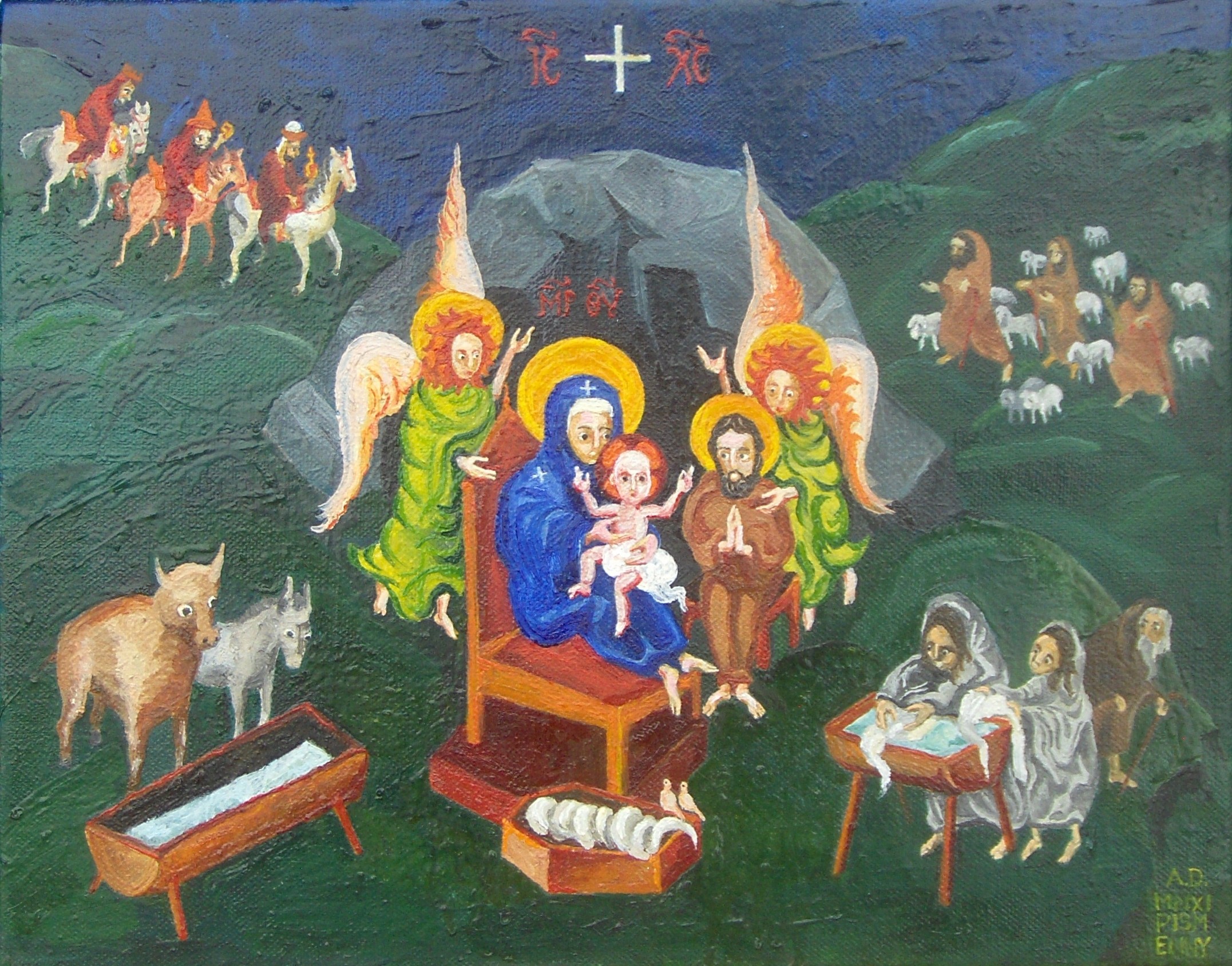
Annotation
For someone familiar with the Orthodox iconography of Nativity, this painting will be also familiar. The departures from the canonical that I allowed myself are as follows: Our Lady is shown enthroned rather than reclining; St. Joseph is shown next to her rather than being tempted (his tempter is shown running away); the two turtledoves are added to the composition; finally, the infant Christ is shown blessing rather than sleeping in the crib. Of course, the largest deviation from Byzantine iconography is my use of canvas support and oils rather than gesso on wood and tempera paints, as well as the decision to step, however slightly, outside of the canon itself. This composition is quite small, as is reflected in its title, and the thick texture of oil paint is allowed to interact with the fabric of the canvas.
I shall comment on all the elements of the composition, whether they happen to be canonical Orthodox or not.

The center of the composition is the infant Christ, His blessed Mother, and St. Joseph. Jesus is blessing with both hands, are gesture more frequently seen with Christ in His second coming. Mary is enthroned and St. Joseph is shown in prayer. The Holy Family is flanked by two angels. The cave where the birth of Christ took place is behind them. 
The Christmas star is directly above them, shaped as a cross. The name of Christ is inscribed there in Byzantine Greek abbreviated form. 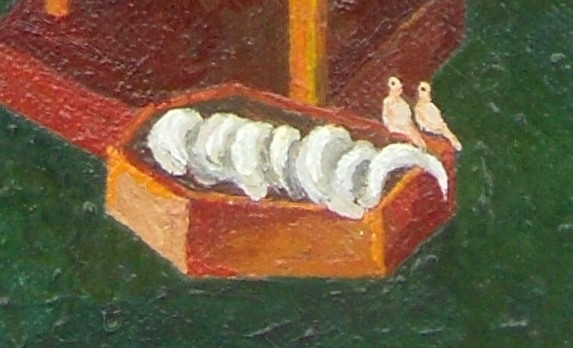
Jesus' crib, as is often the custom in Nativity icons, looks like a coffin. This reminds us of the purpose of the Divine Birth, which is for Christ to die. The swaddling clothes in the crib appear to wrap around a missing body, like the burial shroud was in the Empty Tomb. The two birds are the turtledoves that the Holy Family sacrificed at the Temple. 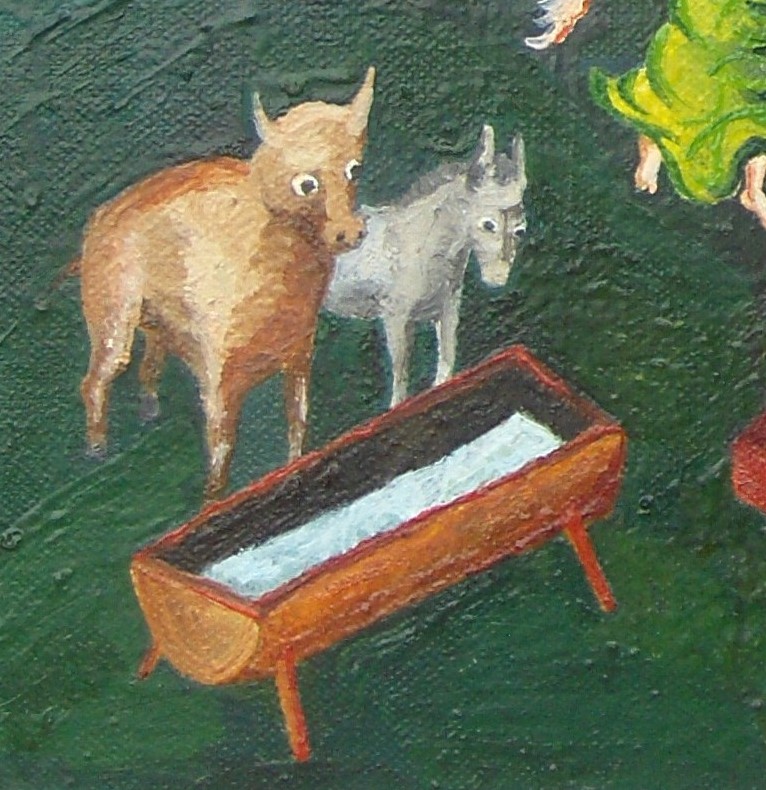
On the left foreground we see an ox and a donkey feeding at a trough. This is to remind us of the prophecy in Isaiah 1:3, "The ox knoweth his owner, and the ass his master's crib: but Israel hath not known me, and my people hath not understood." 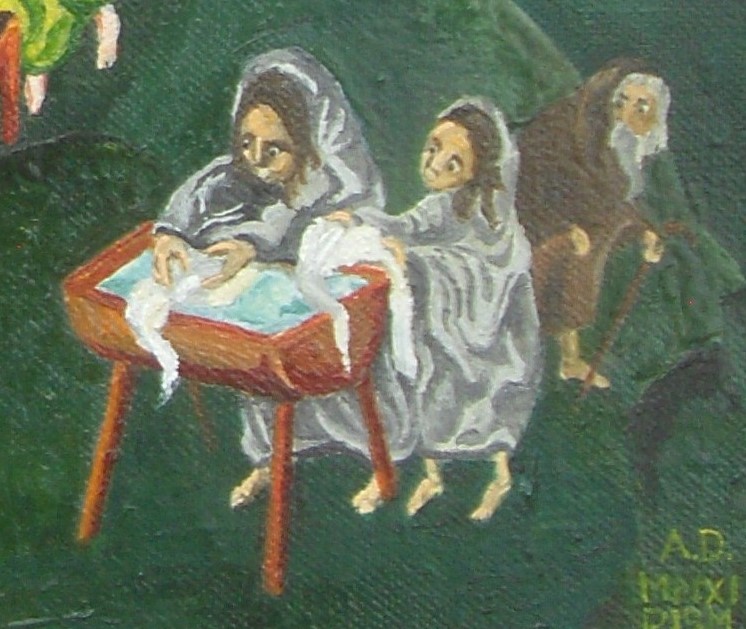
On the right, two women are washing the sheets used during the labor. We are to understand that they assisted in the Divine Birth and now their task is finished. Usually, baby Christ Himself is shown bathed, however, I believe that the scene of washing most directly refers to the lifelong purity of Mary preserved through both human and supernatural means. Right behind them an old man is retreating furtively. That is Satan, whose attempt to seduce Joseph into divorcing Mary just failed.
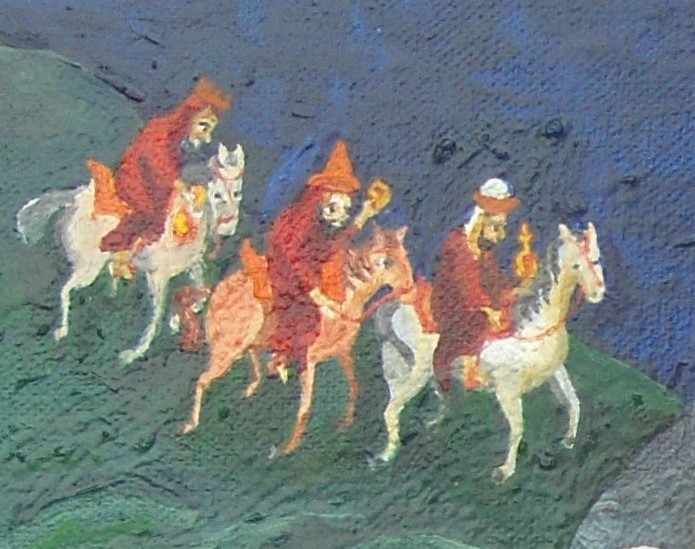
The three kings, -- or astrologers, -- are approaching from the far left, bearing gifts. 
From the right, the shepherds and their flock come to adore Christ.